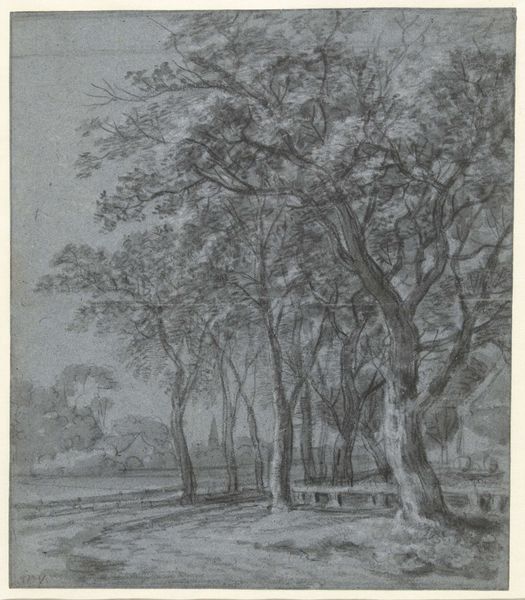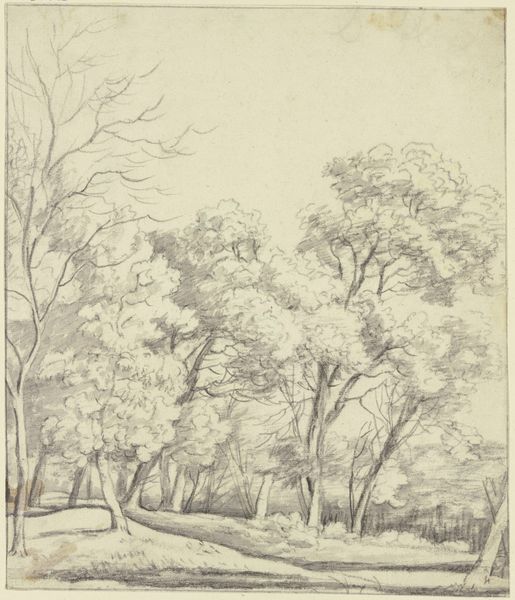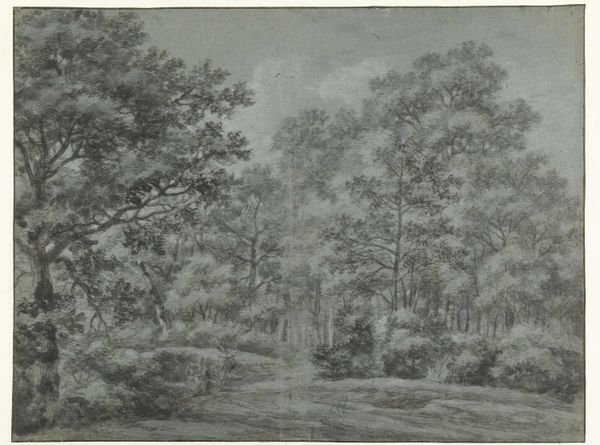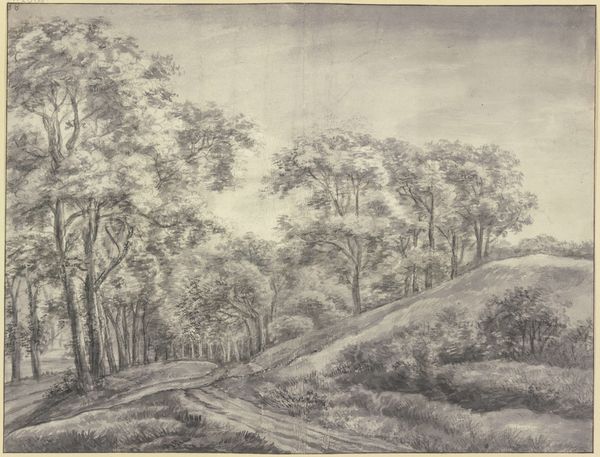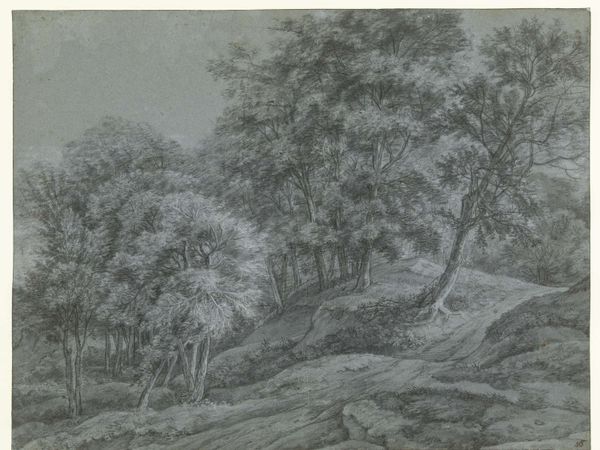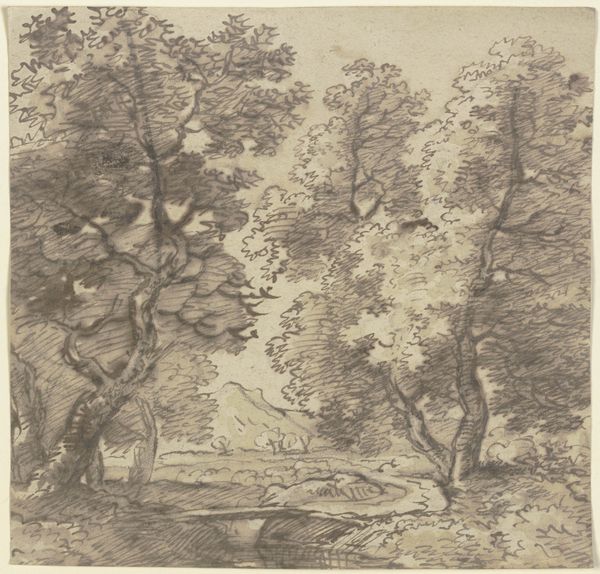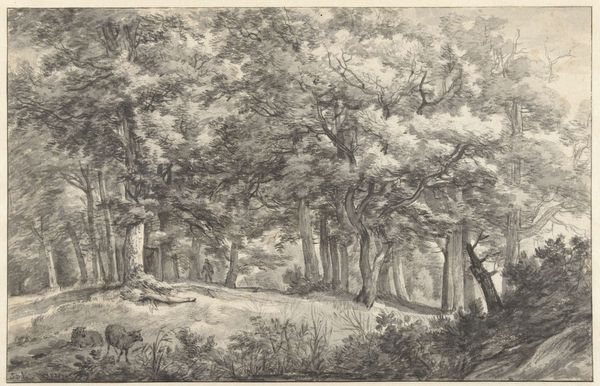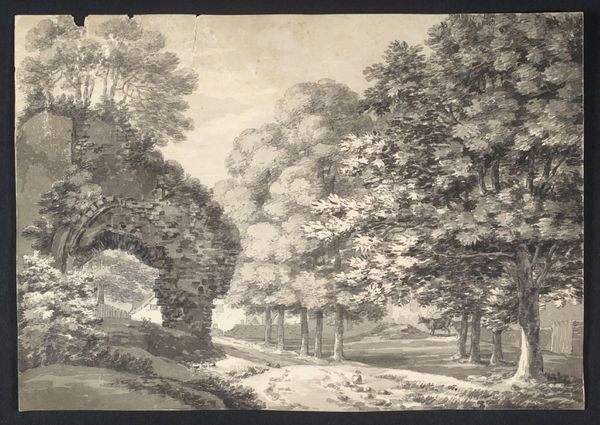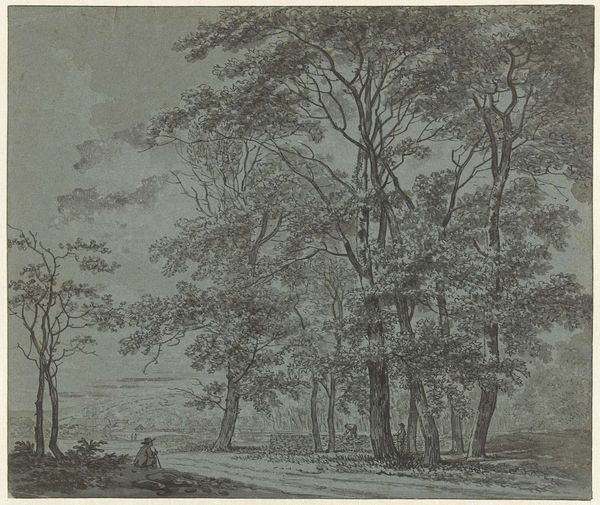
drawing, pencil
#
drawing
#
pencil sketch
#
landscape
#
pencil drawing
#
forest
#
pencil
#
northern-renaissance
#
realism
Dimensions: height 408 mm, width 484 mm
Copyright: Rijks Museum: Open Domain
Editor: Here we have Simon de Vlieger's "Bosgezicht," a pencil drawing created sometime between 1610 and 1653. I'm struck by its density; it feels like stepping into a hushed, cool forest interior. What do you see in this piece, considering its historical moment? Curator: It's fascinating to consider this work in the context of the Dutch Golden Age and its relationship with nature. We see an intense, almost scientific, observation of the natural world. But what does it mean to *represent* the forest in a society increasingly shaped by commerce and colonial expansion? Where do we position this idealized view in a society rapidly changing its relationship with natural resources? Editor: So you're suggesting the drawing isn't just a neutral depiction? Curator: Precisely! Think about the forests themselves. Were they truly "empty" landscapes as depicted, or were they spaces utilized and inhabited by rural communities with their own complex systems of knowledge and resource management? This image implicitly promotes a vision of land ripe for "discovery" and exploitation. Who controls its image controls its narrative. What about the under-represented communities? Editor: That completely reframes how I see the drawing! I was focused on the artistic skill, but you’re right, it's presenting a particular point of view. What strikes you most about it now, considering that perspective? Curator: The quietness becomes unsettling. It silences other voices, other histories connected to the land. How can we make these voices audible and explore those intersections through works like this? Editor: This has given me a lot to think about. I'll never look at landscape art the same way again! Curator: Nor will I!
Comments
No comments
Be the first to comment and join the conversation on the ultimate creative platform.
